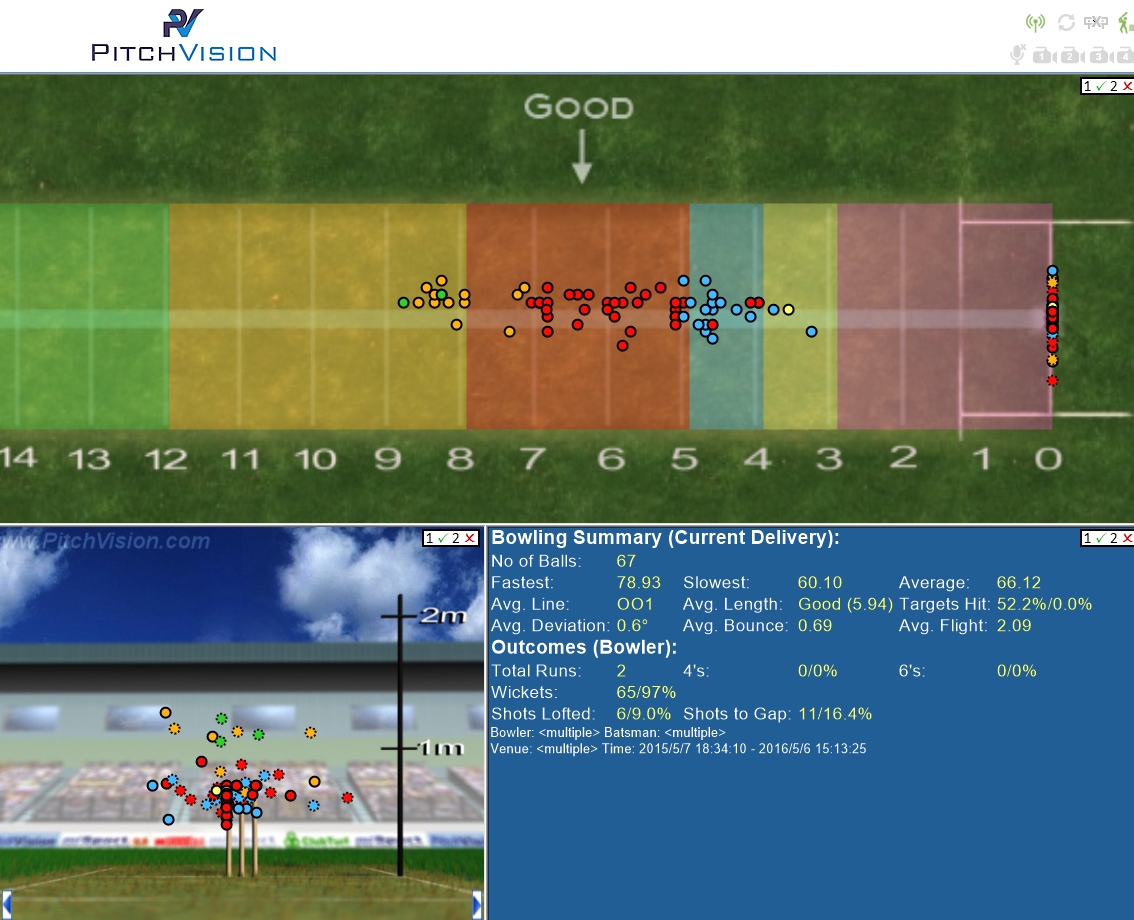Research-Backed Proof of the Right Length to Take Wickets
 What's the best length to bowl to take wickets?
What's the best length to bowl to take wickets?
If you have bowled, you have a good idea of a good length. Yet, how much better would things be if you could know exactly what that length is?
It's this question that struck me when I was working with a couple of senior bowlers recently. I asked them to put down a marker on a good length. One guy placed his marker on a half volley and the other put it back of a length. The first bowler thought the second was way too short in his estimation while his length was perfect.
Was he right? Would that length get him wickets?
I thought back to our winter nets, where we had tracked every ball and seen exactly what wickets fell for both men. We didn't have to guess, or debate. We had the answer.
The perfect length for wickets
So, I fired up PitchVision and called up the main club seamer's bowling data to see what lengths they bowled and, more importantly, what length took wickets. Here's what I found.
This image above is a pitch map of every ball bowled in training that took a wicket. There is a wide variation in line and length as you would expect because wickets are not always good balls. However, the biggest clump of wickets is between the 4.6-5.1m length from the batsman's stumps.
There is also another more spread out set of wickets between 5.6-6.8m. It tails off quickly after that.
So, based on these data, the best length for club medium bowlers is between 4.6m and 6.8m from the stumps, with the optimal length just over 5m. This difference accounts for different styles of batsman and bowlers because 10 seamers, and 20 batsman of varying styles were in the data.
To make it easier, I would suggest rounding to 5-7m as you can eyeball this during a game easily.
The dead zone
What about the "dead zone" where barely any wickets fell?
The length between 5.2m and 5.5m was sparse in wickets. In fact, zero wickets fell when the line was on the stumps. It's unlikely to be a statistical anomaly because it is based on 4586 balls in total bowled, with 281 landing in that zone.
However, whether there is a 3" dead zone in a good area or not is not relevant to coaches or bowlers. I suggest you ignore it because you can't exactly try to miss that area on purpose. It's too small, even for world-class bowlers. The data shows most balls from that length are dots anyway, so you can put that area down as a dot ball zone and get on with bowling a wicket ball next time.
Rubbish gets wickets
It's also clear that you don't need to bowl a magic ball to get a wicket. Seven over-pitched and eleven shorter balls ended up in a dismissal. 16 balls that would have been one day wides also saw a wicket fall. Bad bowling can get wickets!
Of course, you get wickets far less often this way (only 26% of wickets fell to bad balls), yet enough fell to give you solace that you can get away with imperfect bowling and still take wickets. In fact, the chances are, if you take a five wicket haul, at least one of them will be from a bad ball!
Tactically, that means you can strive for the "magic delivery", end up bowling a bad one, and still have a chance of a wicket. However, if you prefer to play the odds and hit your lengths more often, you will also take more wickets. Your chance of taking a wicket goes up dramatically if you hit the right length more often.
The take home message
It's clear that, for seamers, 5-7m from the stumps is the optimal area for taking wickets. However, we can also see a lot of variety from this area, both in the "dead zone" and in bad ball wickets.
Your aim as a seamer is to hit this length as much as possible. You can also take safety in the knowledge the odd bad ball is acceptable as it can take wickets. Just try not to bowl too many as they are also easier to hit.
- Login to post comments


